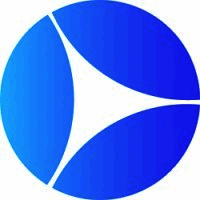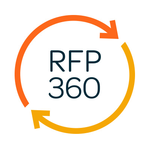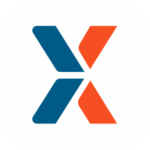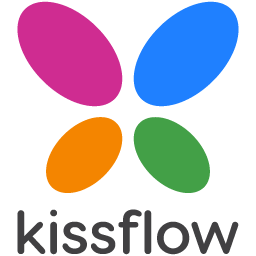Description

SAP Ariba

TRADOGRAM
Comprehensive Overview: SAP Ariba vs TRADOGRAM
Overview of SAP Ariba, TRADOGRAM, and TYASuite Procurement to Pay
a) Primary Functions and Target Markets
SAP Ariba:
- Primary Functions: SAP Ariba is a comprehensive cloud-based procurement solution designed to manage the entire procurement process. It includes solutions for sourcing, procurement, contract management, supplier management, and spend analysis. It connects buyers and suppliers on a single platform to streamline procurement operations.
- Target Markets: SAP Ariba targets large enterprises and multinational corporations across a wide range of industries, including manufacturing, consumer goods, finance, and healthcare. Its robust functionality caters to organizations with complex procurement needs and large supplier networks.
TRADOGRAM:
- Primary Functions: TRADOGRAM is a procurement management software focused on simplifying the purchasing process. It offers tools for purchase order management, supplier management, and expense tracking. TRADOGRAM emphasizes flexibility and ease of use, providing customizable features to suit various business needs.
- Target Markets: TRADOGRAM is aimed at small to medium-sized businesses (SMBs) that require efficient procurement solutions without the complexity of larger systems. It serves industries such as hospitality, retail, manufacturing, and education.
TYASuite Procurement to Pay:
- Primary Functions: TYASuite offers a modular procurement-to-pay (P2P) solution that covers requisition management, purchase orders, vendor management, invoice processing, and payment workflows. It is designed to automate end-to-end procurement processes and enhance financial oversight.
- Target Markets: TYASuite is targeted at small and medium-sized enterprises (SMEs) looking for cost-effective and scalable procurement solutions. It is suitable for industries like construction, pharmaceuticals, and technology.
b) Market Share and User Base
-
SAP Ariba: As a leader in the procurement software market, SAP Ariba holds a significant share, particularly among large global companies. Its extensive suite of tools and integration capabilities with other SAP products and third-party systems contributes to a broad user base across numerous countries.
-
TRADOGRAM: While TRADOGRAM does not have the extensive market share of SAP Ariba, it has carved out a niche among SMBs seeking straightforward procurement solutions. Its user base is smaller but includes a significant number of companies that appreciate its user-friendly interface and cost-effectiveness.
-
TYASuite: TYASuite has a growing presence in the market, particularly among SMEs looking for all-in-one enterprise solutions. Its modular approach attracts businesses seeking tailored procurement options, though its market share is still developing compared to more established players.
c) Key Differentiating Factors
-
Complexity and Customization:
- SAP Ariba offers a complex and highly customizable solution with extensive features suitable for large enterprises that require granular control and integration with existing systems.
- TRADOGRAM focuses on simplicity and ease of use, appealing to smaller businesses that need straightforward, intuitive controls without the overhead of unnecessary features.
- TYASuite provides a modular approach, allowing businesses to pick and choose features that best fit their needs, offering more flexibility than a one-size-fits-all model.
-
Integration Capabilities:
- SAP Ariba is well-integrated with SAP’s broader suite of enterprise solutions, providing cohesive performance for existing SAP users.
- TRADOGRAM offers integrations with various business systems but is not as comprehensive as SAP Ariba.
- TYASuite emphasizes seamless integration with other enterprise resource planning (ERP) systems and has specific modules for different business processes.
-
Cost and Accessibility:
- SAP Ariba is generally more expensive, reflecting its comprehensive capabilities and target market of large enterprises.
- TRADOGRAM provides a more affordable solution, which is appealing to smaller businesses sensitive to IT expenditures.
- TYASuite positions itself as a cost-effective alternative with scalable pricing based on the modules selected, making it accessible to a variety of business sizes.
These three solutions each offer distinct features and cater to different segments within the procurement market. The choice between them largely depends on the size of the organization, complexity of procurement needs, and budget constraints.
Contact Info

Year founded :
1996
+49 6227 747474
Not Available
Germany
http://www.linkedin.com/company/ariba

Year founded :
2014
+1 844-328-9523
Not Available
Canada
http://www.linkedin.com/company/tradogram
Feature Similarity Breakdown: SAP Ariba, TRADOGRAM
When comparing SAP Ariba, TRADOGRAM, and TYASuite Procurement to Pay, it's crucial to analyze their commonalities, differences, and unique attributes to understand their feature offerings comprehensively.
a) Core Features in Common
-
Procurement Management:
- All three platforms offer streamlined procurement processes, including purchase requisition, order management, and supplier management.
-
Supplier Management:
- They allow managing supplier relationships, maintaining supplier databases, and evaluating supplier performance.
-
Invoicing and Payments:
- Each solution supports invoice processing, payments, and invoice matching against purchase orders and receipts.
-
Reporting and Analytics:
- All three provide reporting capabilities and analytics to help businesses make data-driven procurement decisions.
-
Spend Management:
- Tools to track and manage spending to ensure cost efficiency and compliance with budgets are present in all three platforms.
-
Integration Capabilities:
- They offer integration possibilities with other ERP systems and tools to ensure seamless workflows.
b) User Interface Comparison
-
SAP Ariba:
- SAP Ariba’s interface is robust, but some users find it slightly complex due to its extensive feature set. It is designed with a focus on providing detailed, comprehensive information, which can sometimes overwhelm new users.
-
TRADOGRAM:
- This platform has a more straightforward, user-friendly interface, focusing on ease of use and simplicity. It is noted for its intuitive design which caters well to smaller businesses or those new to procurement technology.
-
TYASuite Procurement to Pay:
- Similar to TRADOGRAM, TYASuite offers a clean and simple interface, making it easy for users to navigate without extensive training. It aims to provide a balance between functionality and user accessibility.
c) Unique Features
-
SAP Ariba:
- Network-Based Collaboration: SAP Ariba offers access to the Ariba Network, one of the largest digital business networks for dynamic collaboration.
- Advanced Compliance and Risk Management: Comprehensive tools for managing procurement risk and compliance, beneficial for large enterprises with complex regulatory requirements.
-
TRADOGRAM:
- Customization and Scalability: High level of customization options to tailor the product to specific business needs and its cloud-based scalability suits SMEs aiming for growth.
- Simplicity and Speed: Emphasizes quick deployment and ease of use with minimal setup time, beneficial for businesses transitioning from manual processes.
-
TYASuite Procurement to Pay:
- Integrated Suite Solution: As part of a broader suite of ERP tools, TYASuite offers strong integration with its other modules like inventory, accounting, and project management.
- Prebuilt Templates and Automation: Prebuilt templates for procurement processes and automation features that can significantly reduce manual paperwork and error likelihood.
Each solution has its advantages depending on the organization's size, industry, and specific procurement needs. SAP Ariba might be favored by larger enterprises with complex supply chains, while TRADOGRAM and TYASuite could be more suitable for smaller to mid-sized companies looking for straightforward, scalable solutions.
Features

Supplier Management
Procurement
Invoice Management
Contract Management
Spend Management

Procurement Management
User Collaboration
Cost Control
Compliance and Risk Management
Reporting and Analytics
Best Fit Use Cases: SAP Ariba, TRADOGRAM
When evaluating procurement solutions like SAP Ariba, TRADOGRAM, and TYASuite Procurement to Pay, it's essential to understand their strengths and the contexts in which they excel. Below is an analysis of the best-fit use cases for each of these platforms:
a) SAP Ariba
Best Fit Use Cases:
- Large Enterprises: SAP Ariba is particularly well-suited for large organizations with complex procurement needs due to its robust and comprehensive feature set.
- Global Operations: Companies with global supply chains benefit from Ariba’s robust international capabilities, including multi-currency and multi-language support.
- Industries with Complex Supply Chains: It's ideal for sectors like manufacturing, automotive, pharmaceuticals, and retail, which require sophisticated supplier networks and management.
- Strategic Sourcing and Supplier Management: Ariba provides powerful tools for strategic sourcing, supplier relationship management, and spend analysis, allowing businesses to optimize procurement and supplier performance.
b) TRADOGRAM
Preferred Scenarios:
- Small to Medium-Sized Enterprises (SMEs): TRADOGRAM is designed to cater to the needs of small and medium-sized businesses, offering essential procurement functionalities without the complexity and cost of larger systems.
- Businesses Seeking Cost-Effectiveness: Its pricing model is attractive for companies that need a streamlined, cost-effective solution without compromising on essential procurement features.
- Customization Needs: Businesses that require customizable solutions with straightforward implementation will find TRADOGRAM beneficial due to its flexibility.
- Projects with Moderate Procurement Complexity: It’s suitable for projects that do not require extensive supply chain management functions but still need efficient procurement processes.
c) TYASuite Procurement to Pay
Consideration Scenarios:
- Growing Businesses and Startups: TYASuite is well-suited for startups and growing businesses that are scaling their operations and need a system they can implement quickly to handle increasing procurement demands.
- Companies Transitioning to Digital Procurement: It provides a straightforward solution for businesses transitioning from manual to digital procurement processes.
- Industries with Simple Procurement Needs: Suitable for industries like services, agriculture, or hospitality, where procurement processes are relatively simpler and do not require complex supply chain management.
- Integration with Other Systems: Businesses that use other TYASuite modules can benefit from seamless integration and a unified system.
d) Catering to Industry Verticals and Company Sizes
-
SAP Ariba generally caters to large multinational corporations and those in industries with complex supply chains. Its extensive features and scalability make it a powerhouse for companies needing a highly integrated procurement solution.
-
TRADOGRAM targets SMEs across various industries, providing essential procurement capabilities without the overhead of managing an enterprise-level system. It's versatile across industries due to its customization options, appealing to businesses in technology, construction, and more.
-
TYASuite Procurement to Pay is ideal for small to medium-sized companies across diverse verticals, supporting those whose procurement processes can be streamlined with a simple yet effective solution. Its affordability and ease of use make it attractive to growing businesses.
In conclusion, the choice among SAP Ariba, TRADOGRAM, and TYASuite Procurement to Pay largely depends on the size of the business, the complexity of procurement needs, and the specific industry requirements. Each platform has carved a niche to serve different ends of the market spectrum.
Pricing

Pricing Not Available

Pricing Not Available
Metrics History
Metrics History
Comparing teamSize across companies
Conclusion & Final Verdict: SAP Ariba vs TRADOGRAM
To provide a comprehensive conclusion and final verdict for SAP Ariba, TRADOGRAM, and TYASuite Procurement to Pay, let's evaluate each product considering a variety of factors, including usability, features, pricing, scalability, and support. Here's an analysis:
a) Best Overall Value
-
SAP Ariba: Offers the best overall value for large enterprises with complex procurement needs. It provides extensive features, global reach, and robust integration capabilities, particularly suited for organizations with significant procurement complexities.
-
TRADOGRAM: Offers the best overall value for small to mid-sized businesses looking for a cost-effective, straightforward procurement solution. It's known for its user-friendly interface and flexible offerings that suit growing businesses.
-
TYASuite Procurement to Pay: Delivers good value for small to medium businesses seeking an affordable cloud-based procurement solution. It's especially beneficial for companies looking to streamline their finance and procurement activities under one platform.
b) Pros and Cons
SAP Ariba
-
Pros:
- Comprehensive feature set covering all procurement processes
- Strong integration capabilities with SAP and other ERP systems
- Global network for supplier collaboration
- Robust analytics and reporting tools
-
Cons:
- High cost, not suitable for small enterprises
- Complexity may require longer implementation time
- Learning curve is steep for new users
TRADOGRAM
-
Pros:
- Easy to use with an intuitive interface
- Flexible pricing plans, suitable for SMBs
- Quick implementation time
- Adequate set of features for small to mid-sized businesses
-
Cons:
- May lack advanced features needed by large enterprises
- Limited global reach compared to SAP Ariba
- Customization options are fewer
TYASuite Procurement to Pay
-
Pros:
- Cost-effective with comprehensive procurement to pay features
- Cloud-based, offering ease of access and implementation
- Integrated with TYA Suite's other business process modules
- Scalable for small to medium-sized enterprises
-
Cons:
- May not be suitable for very large enterprises with complex needs
- Relatively new in the market, which could raise concerns about long-term support
- Integration with non-TYA Suite systems may be limited
c) Recommendations for Users
-
For Large Enterprises: SAP Ariba is the most suitable option due to its extensive features and global supplier network capabilities. However, ensure your organization is ready for the financial investment and implementation time Ariba requires.
-
For Small to Mid-Sized Businesses:
- If budget and ease of use are priorities: TRADOGRAM is an optimal choice, offering essential features without the complexity.
- If integration with finance and cloud access are priorities: TYASuite provides a viable, cost-effective option, especially if using other TYASuite modules.
-
Additional Considerations:
- Evaluate the specific procurement needs and scale of growth expected in your organization to choose appropriately.
- Consider conducting a pilot or trial period (if available) before full implementation.
- Investigate the level of customer support and user community each provider offers, as this can be crucial during transitions and ongoing operations.
Each product has unique strengths, and the final decision should align with the organization's specific requirements, strategic goals, and budget constraints.
Add to compare
Add similar companies



